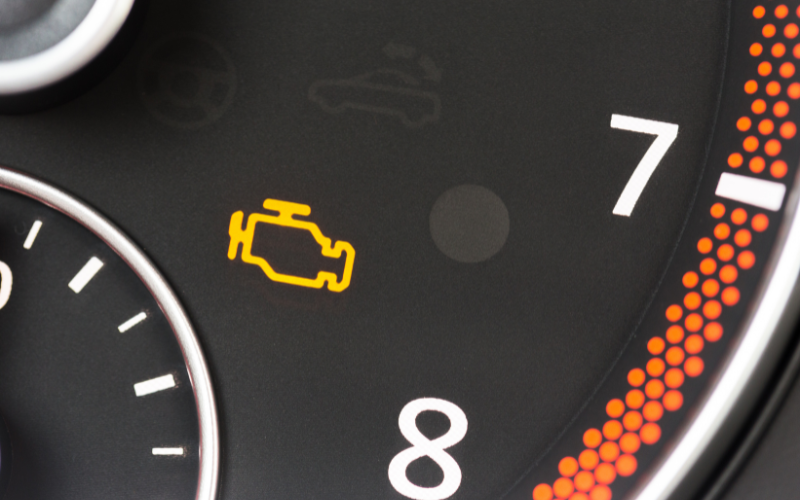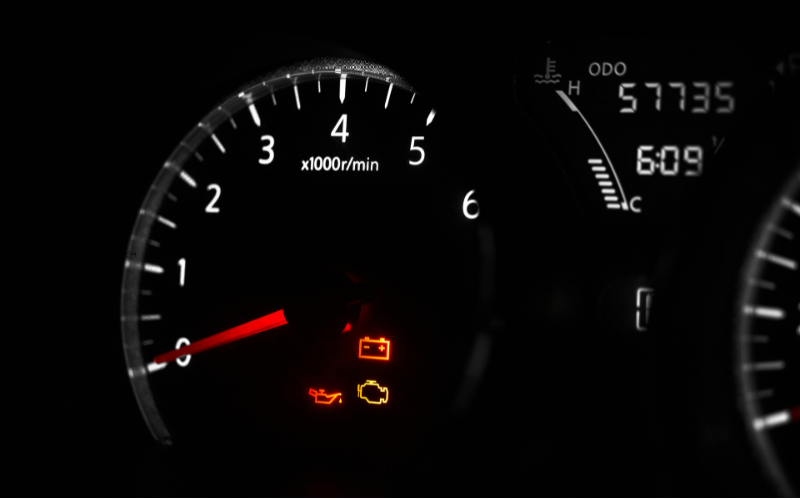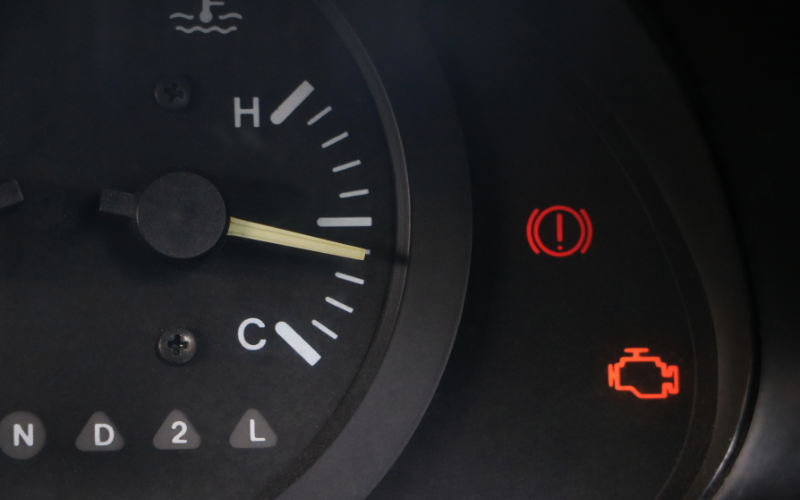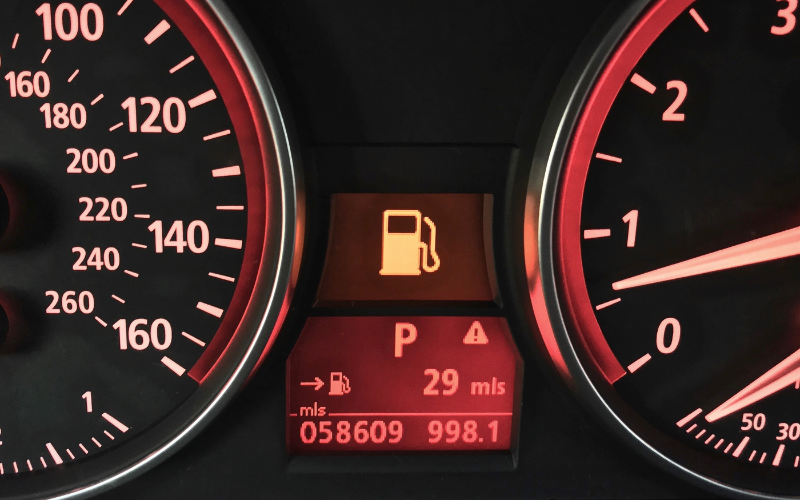Car Dashboard Warning Lights Explained

Learn about the most important dashboard warning lights to look out for and what they mean.
When you start your car, you might notice several warning lights show on your dashboard. These are only displayed momentarily and should vanish after a second or two.
But what if they don’t? Or perhaps you notice a new warning light displayed on your dashboard while driving? Not to worry.
In this article, we’ll take you through the main dashboard warning lights to be aware of, so you know when to seek help.
What are dashboard warning lights?
Dashboard warning lights are a series of different coloured symbols that may appear on your driver’s display.
They are there to warn you of any potential issues with your car, with the colour indicating the severity of the issue:
- Red – indicates an urgent issue. These should be addressed immediately by taking your car to your local garage or fixing it yourself if you are able.
- Orange/Yellow – an issue has been identified, but it is less urgent than a red light. You should still have this checked in good time.
- Green, White, or Blue – the system is generally in good working order.
Note that these colours may vary depending on the make of your vehicle. That’s why it’s always a good idea to check any dashboard warning symbols against your vehicle handbook.
What are the most common dashboard warning lights?
When looking in your vehicle’s handbook, you’ll notice there are a lot of symbols to do with your vehicle.
There’s no way you’ll remember them all, so we’ve rounded up the top symbols you need to be aware of:
Engine Warning Light

Each time your engine is switched on, the engine warning light will illuminate. Though if it doesn’t go off, this could indicate a problem with your vehicle’s engine.
This could be a multitude of things and might not be a major issue. However, you should still take your vehicle for a check-up as soon as possible.
With more serious issues, you may not be able to drive your vehicle when it appears. You’ll need to pull over where it’s safe and contact your breakdown provider to assist.
Oil Pressure Warning Light
This symbol resembles an oil container, and when appearing on your display could indicate an issue with the oil pressure.
In some cases, this could just mean a top-up of oil is required if you’re running low. However, you should still always get this checked, as incorrect oil levels can be dangerous since the engine won’t be properly lubricated.

Battery Warning Light
Appearing as a battery icon with a ‘-‘ and ‘+’ on either side, this light indicates a problem with your battery.
This could be that the battery is low or flat or has sustained some kind of damage. It could also be a faulty alternator or an issue with the wiring.
Since there’s no way to tell right away, you’ll need to take your vehicle to your local garage for a check-up.
Tyre Pressure Monitoring System
Your tyres are what keep you in contact with the road, making them crucial to road safety. The Tyre Pressure Monitoring System (TPMS) light lets you know if there are any issues.
It often appears when there has been a drop in tyre pressure, more so in the winter due to colder temperatures. If the symbol is showing, try checking and inflating your tyre pressures as this may be the solution.
If after doing so the symbol remains, this could mean a puncture or leak. It’s important not to drive on damaged tyres, as this is a leading cause of accidents.
Take your car to your local garage and get a full inspection to ensure maximum safety. At Macklin Motors, we offer a free tyre check with the help of our expert technicians for peace of mind.
Temperature Warning Light
Appearing as a thermometer with three spokes over wavy lines, the temperature warning light is very important.
It may appear when your cooling levels are low, meaning there isn’t enough coolant fluid to keep the engine operating at an optimal temperature.
This might be easily solved by topping up your coolant levels, though if it doesn’t go away it could indicate a leak, which is a more complex issue.
If the light comes on, pull over in a safe place and give your engine time to cool down before opening the bonnet to inspect the issue. Then, call a professional to assist you.
Brake System Warning Light

You’ll notice this symbol appears when applying your hand brake, often in the form of an exclamation mark in a circle, with brackets on either side.
It’s normal for this to appear when the handbrake is on, however, if it shows after you release it this could mean a brake system issue.
This could be to do with your brake pads, though some cars have a separate warning light for this. Stopping ability is incredibly important to your safety and that of others. So, if you notice this symbol, be sure to have your brakes checked.
ABS Warning Light
The Anti-Lock Braking System (ABS) is what helps prevent your wheels from locking during harsh braking. This enables you to come to a safe stop.
Again, this symbol normally appears when first switching your vehicle on. But if it doesn’t go away on its own, it could mean there’s a problem with the system. Do not drive your vehicle in this case and arrange a check-up for your vehicle as soon as possible.
Supplemental Restraint Warning System
Another symbol you might see when switching on your ignition, though you may not be familiar with its meaning.
The Supplemental Restraint Warning System appears as a person with a seatbelt next to a circle. This is an airbag system in place to protect passengers in the event of a collision. If displayed, it could mean an issue with the system.
Note that some vehicles may have separate warning lights for the airbag and seatbelt systems. Always consult your vehicle handbook for specific guidance.
Fuel Warning Light

The Fuel Warning Light will show when your vehicle is low on fuel. This may illuminate when you have 50-100 miles of fuel remaining, giving you plenty of time to go and refuel.
You should never let your fuel levels run too low otherwise you risk breaking down. If you run a diesel car, it can also damage the internals of your engine with the dregs of the fuel tank. It’s worth carrying an empty fuel can in case you happen to run out fuel and need to walk to the nearest station.
Always make sure you have plenty of fuel before setting off, and the likelihood is that you’ll never see this symbol. If you find yourself using more fuel, read our five fuel-saving driving tips you can try.
General Warning Light
Either yellow or orange, the General Warning Light appears as an exclamation mark inside a triangle. This indicates a problem somewhere in your vehicle where there isn’t already a warning light for it.
You’ll usually receive some kind of message on your vehicle’s information screen to let you know more. Check your vehicle’s manual, and if you’re unsure take it to a garage.
Diesel Particulate Filter (DPF) Warning Light
Diesel vehicles may display this symbol when there is a problem with the exhaust’s particulate filter. This is important as it helps remove harmful particles from the exhaust fumes and reduce emissions.
If this appears, have your vehicle checked by a technician as it could cause damage to both your vehicle and the environment.
How we can help at Macklin Motors
At Macklin Motors, you can always be confident your vehicle is in good hands. Whether it’s a service, MOT, repair, or something else you need, our expert technicians are here to help.
Trained to manufacturer standards, they know your vehicle inside and out and will be able to help tackle any issues.
Our seasonal checks are a great way to make sure your vehicle is running smoothly. These offer a visual check of your vehicle to make sure everything is in working order, with a comprehensive report at the end.
View our seasonal checks available now and get peace of mind for all your journeys.